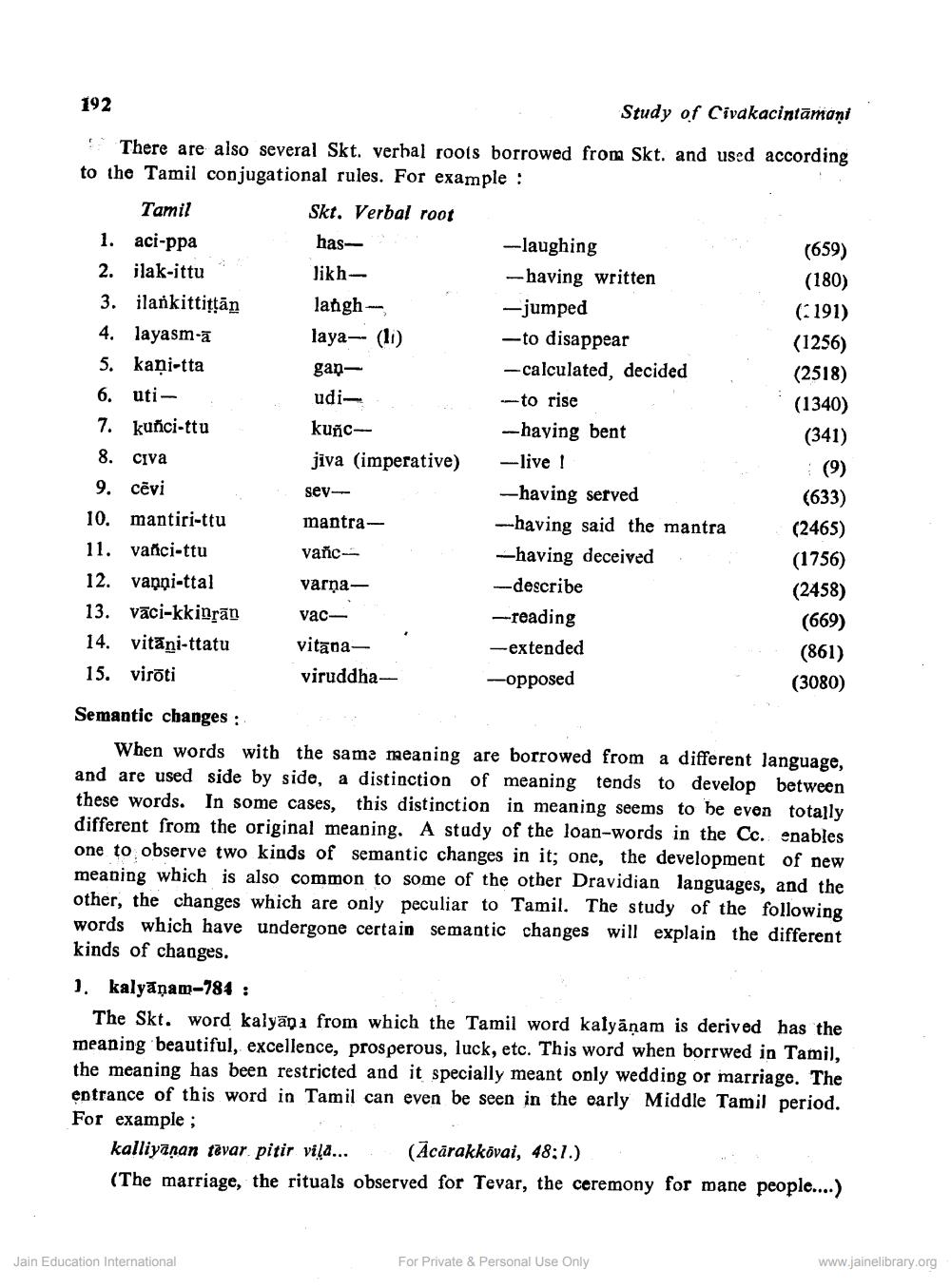________________
192
Study of Civakacintāmani
There are also several Skt. verhal roots borrowed from Skt. and used according to the Tamil conjugational rules. For example : Tamil
Skt. Verbal root 1. aci-ppa
has--laughing
(659) 2. jlak-ittu
Jikh-- having written
(180) 3. ilankittițţān langh
- jumped
(2191) 4. layasm-a laya-- (11) -to disappear
(1256) 5. kani-tta
gan -calculated, decided
(2518) 6. uti
udi -to rise
(1340) 7. kunci-ttu
kunc---haying bent
(341) civa jiva (imperative) - live!
(9) 9. cēvi sey--having served
(633) 10. mantiri-ttu mantra
--having said the mantra (2465) 11. vanci-ttu
vanc-having deceived
(1756) 12. vanni-ttal varna
-describe
(2458) 13. vāci-kkinļān vac--reading
(669) 14. vitāni-ttatu vitama.
---extended
(861) 15. viroti
viruddha-opposed
(3080)
ൽ
Semantic changes :
When words with the same meaning are borrowed from a different language, and are used side by side, a distinction of meaning tends to develop between these words. In some cases, this distinction in meaning seems to be even totally different from the original meaning. A study of the loan-words in the Cc. enables one to observe two kinds of semantic changes in it; one, the development of new meaning which is also common to some of the other Dravidian languages, and the other, the changes which are only peculiar to Tamil. The study of the following words which have undergone certain semantic changes will explain the different kinds of changes. 1. kalyāṇam-984 :
The Skt. word kalyānı from which the Tamil word kalyāņam is derived has the meaning beautiful, excellence, prosperous, luck, etc. This word when borrwed in Tamil, the meaning has been restricted and it specially meant only wedding or marriage. The entrance of this word in Tamil can even be seen in the early Middle Tamil period. For example ;
kalliyanan tavar pitir vila... (Acarakkövai, 48;1.) (The marriage, the rituals observed for Tevar, the ceremony for mane people....)
Jain Education International
www.jainelibrary.org
For Private & Personal Use Only




